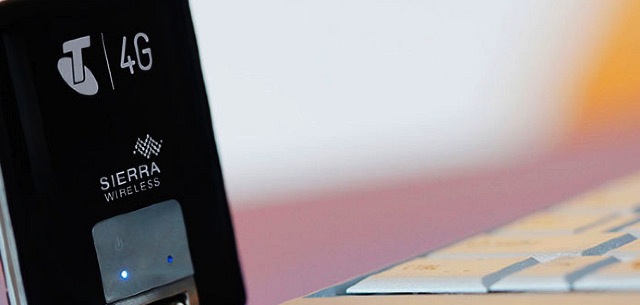
Telstra to add a new 900 MHz 4G network
In recognition of the increasing demand of mobile broadband users — both with smartphones and wireless dongles — Telstra has announced that it will be adding a ‘second’ 4G network to its arsenal, this time running on the 900 MHz band. Those of you who have witnessed Telstra’s network congestion will be rejoicing at this point — the dreaded ‘full signal and 3G indicator, but no data moving anywhere’ may become a thing of the past… until the new network gets congested too.
Just as Telstra’s 850MHz Next G network offered superior coverage and network capacity to the aging 2100 MHz 3G network, so too will offering 4G in the 900 MHz spectrum offer greater network coverage, building penetration and of course, signal propagation in less densely populated areas.
But wait, my device doesn’t support 4G on the 900 MHz band!
Never fear, Telstra plans to issue 4G device firmware updates where possible to make hardware compatible with the new 900MHz network spectrum. In addition, Telstra is working with Sierra Wireless (which has made many of Telstra’s higher end 3G and 4G dongles in the past) to develop a dedicated 900 MHz 4G dongle around mid 2013. Some of the recently released and soon-to-be released devices, like the Sony Xperia Z, already support 900 MHz 4G out of the box.
Not just a new network, but some new technologies too
Not content with just announcing (effectively) a new 4G network, Telstra has also announced that it will be trialling some new network technologies across its existing 4G network. LTE-A (LTE Advanced) will neatly compliment the new 900 MHz 4G network, as it allows LTE networks operating on different frequencies to be (effectively) combined, allowing changeover from one frequency to the other without the handset recognising a change of network stream. As the 4G network doesn’t carry voice traffic at the moment, this may not mean an awful lot, but when we see VoLTE in Australia, this will matter.
LTE-B (LTE Broadcast) is designed for more efficient video and media deployment across the LTE network, so people watching or consuming the same media content doesn’t chew up network bandwidth like a drooling banshee. At present, if 100 people are watching Mobile Foxtel off one tower, then (a) that tower will shortly catch fire and (b) everyone will start glowing green. There’s also the more real-life impact that data will largely start to slow to a halt on said tower, because it’s broadcasting 100 copies of essentially the same bitstream. This is where LTE-B can step in. Rather than have 100 identical bitstreams hitting the tower and being broadcast, LTE-B allows ONE bitstream to the tower, and allows handsets to ‘tune-in’ to this stream — saving bandwidth to, and from, the tower. Exciting stuff as you can clearly see, but it will only work for specific use cases, such as:
- Streaming TV, such as Foxtel or ABC News 24 (if Telstra decided to offer that)
- OTA software updates — update streams could start every hour or so, and your update could ‘commence’ once the beginning of the update stream was detected.
- Other software updates / large file transmissions, though this would need to be carefully managed. It’s not just a ‘switch on’ service that’ll ‘just work’.
In-fill networks to reduce congestion
Last, but not least, much teeth gnashing will be eradicated as Telstra plans to roll-out smaller cell networks in congested city areas. These networks — called Hetrogenous Networks — will be used to rapidly deploy coverage in highly populated areas and large events. No more going to the soccer or standing at North Sydney train station with full signal and no data.
This can only be good news for Telstra customers, who expect a premium service for their premium dollar.




Now if only they’d make data affordable to use their network,
haha !!! know some spots on the south coast of NSW, you can’t get telstra 3G reception!!!!!!!
Too true on the stations, Central often has no data any more whereas Optus don’t even bother trying. North Sydney is usually good for me but then again I am normally just passing through.
Yesterdays news……
You actually have to hand it to them on the technical side. They are probably the worst company i have ever dealt with with regards to customer service but they are so ahead of the other telcos from a network standpoint, there really is no other choice, especially in regional Australia (or Canberra lol)
Their business support is amazing though…. I havent been on the retail end for a while now so I cant comment on that.